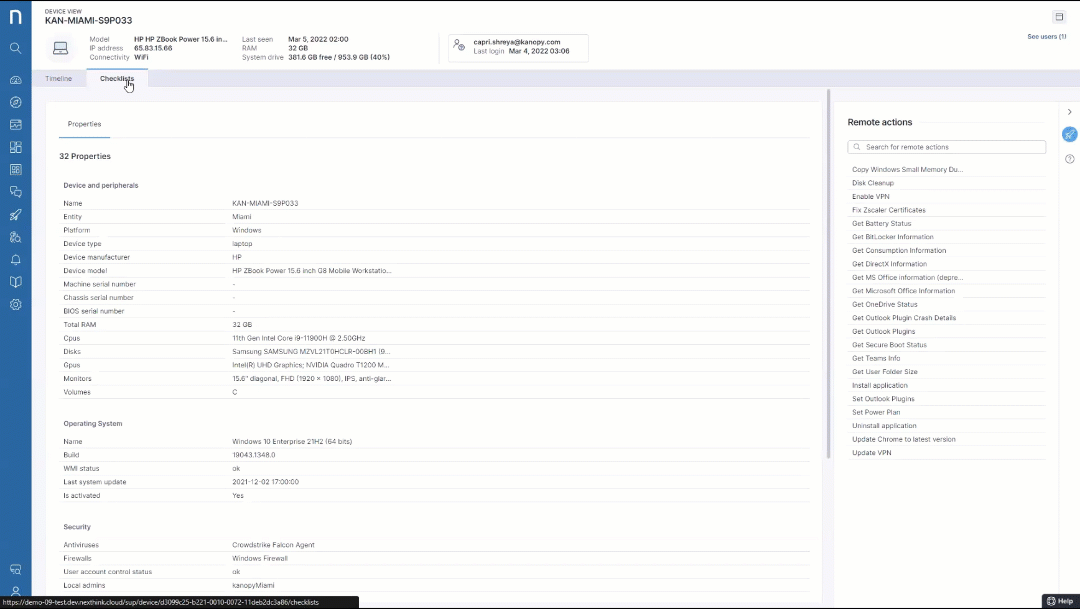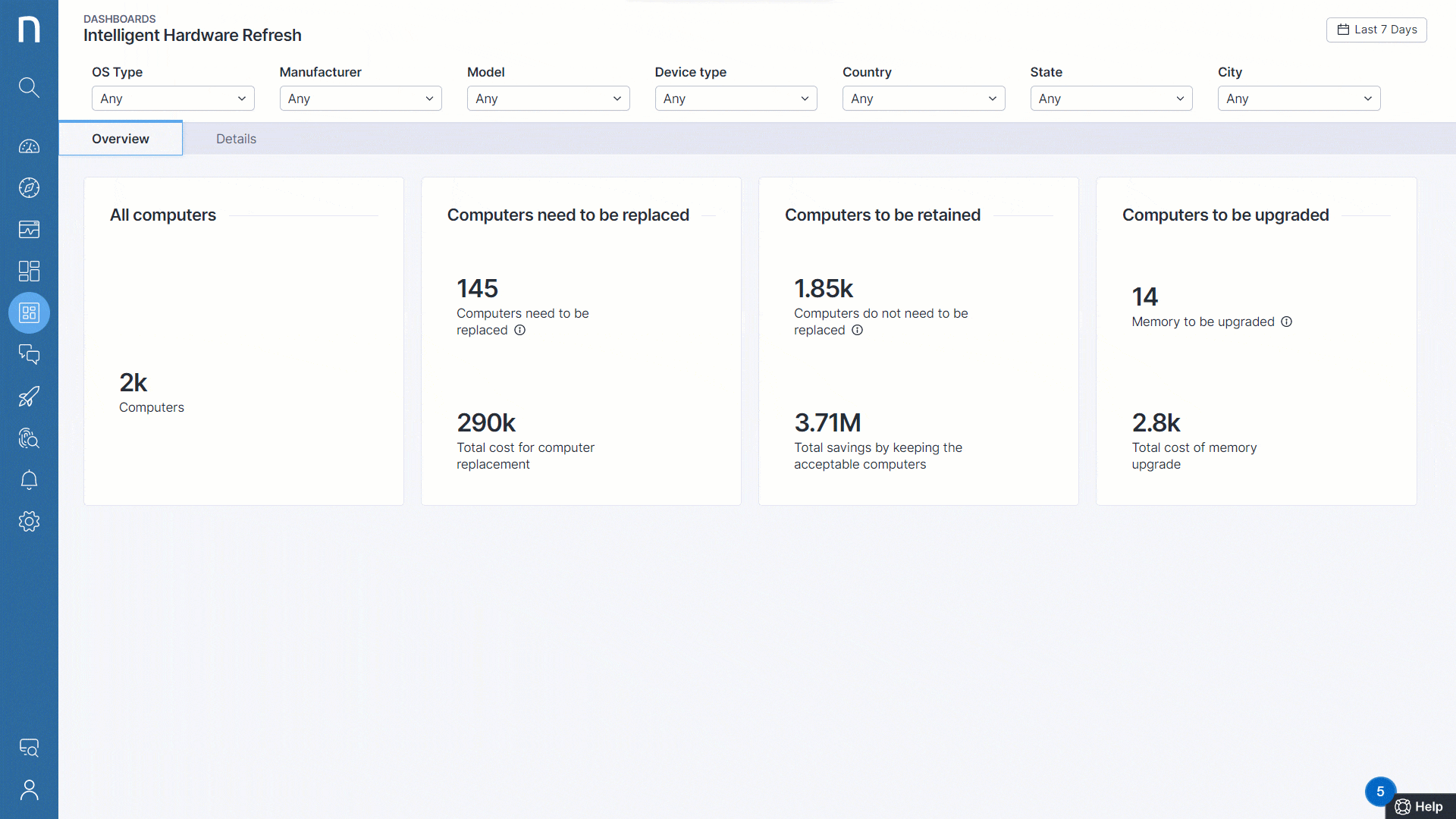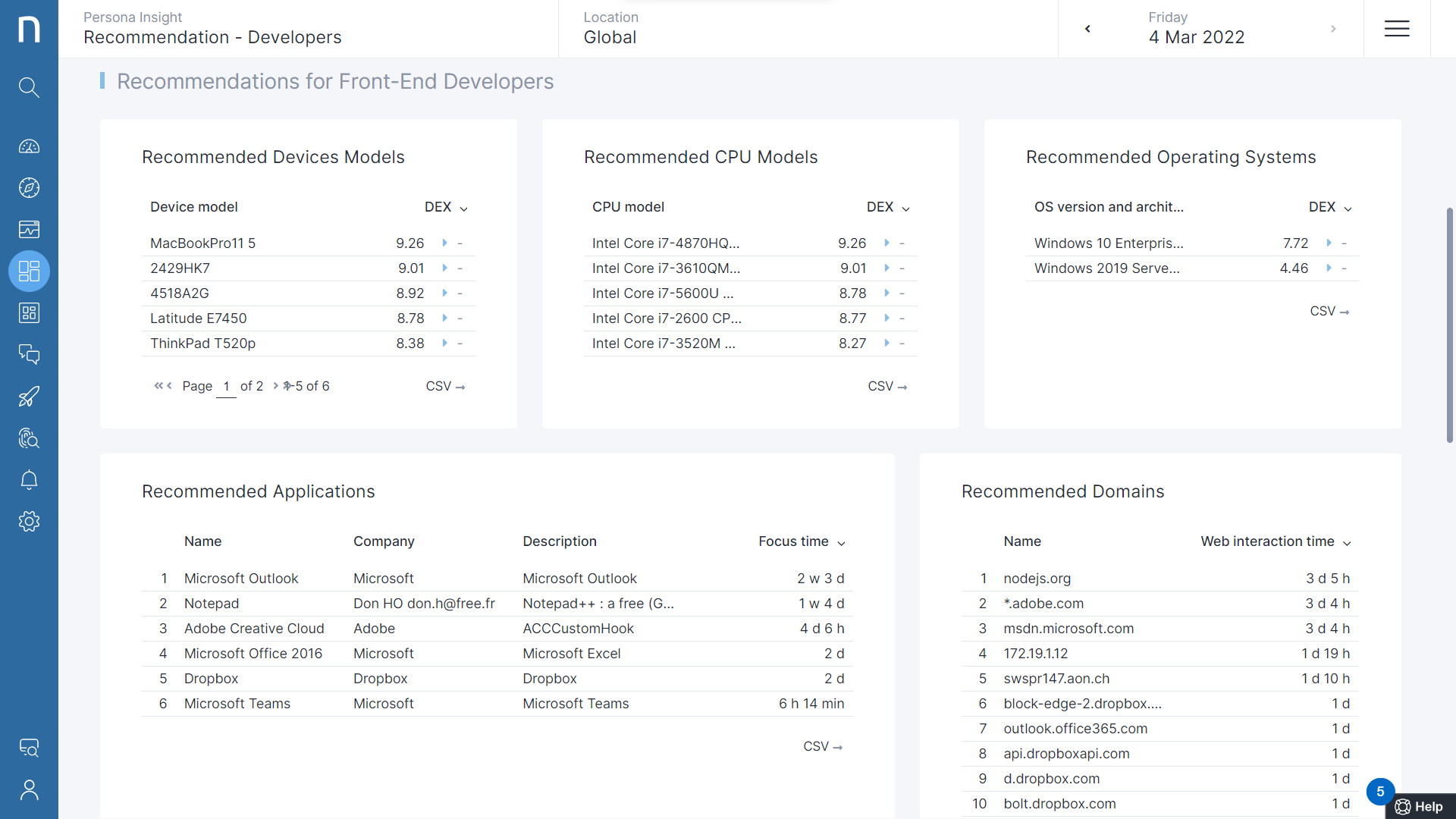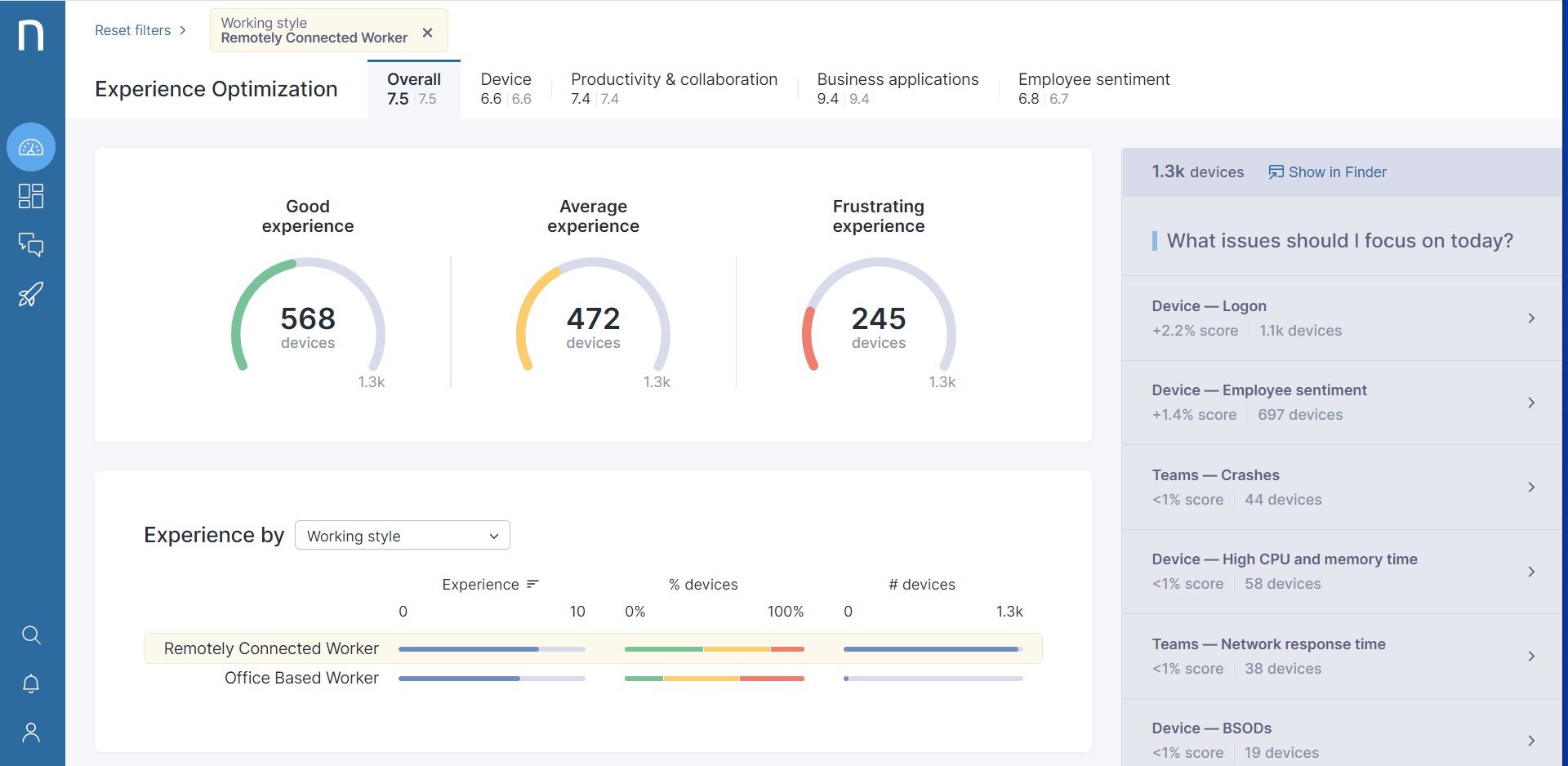How IT Can Save $400 per Endpoint in Less Than a Year
For IT and EUC teams, reducing costs is easier said than done.
You can’t just blindly reduce headcount, delay transformation projects, or extend hardware lifecycles in the hopes of appeasing your CFO’s demands for short-term cost reduction.
The reality is, rushed cost-cutting will put your service desk under pressure. In turn, such self-inflicted inefficiencies will only result in performance degradations, additional tickets, and escalations.
And here is the dilemma: How do you manage the pressure to reduce IT costs in the short term without harming employee satisfaction and increasing escalations?
Answer: Total landscape observability and Service Desk automation to make informed decisions and enhance EUC efficiency.

Measuring Nexthink Benefits
Forrester conducted a Total Economic Impact assessment of Nexthink’s 10k+ endpoints customers to identify the platform’s true tangible, financial benefits. The result? In 3 years, a composite organization experiences a total benefit of $19.68M (NPV) and an ROI of 294%.
This represents more than $400 saved per endpoint in just the first year.
- To review the full report, get in touch with one of our reps.
- Or, reads the 1-page summary Nexthink | Forrester Total Economic Impact Study
Here is an overview of the 7 main areas (and average savings) where Nexthink customers are identifying and avoiding unnecessary IT costs according to Forrester:
1) $5.2M Savings from Reduced MTTR & EUC Headcount Efficiency Gains
Forrester found that with Nexthink, Level 1 and Level 2 end-user support teams make efficiency gains of 10% to 20%. Real-time visibility and proactive automation enable reductions in both the mean-time-to-resolution (MTTR) of end-user issues and the number of service desk tickets that results in a three-year, risk-adjusted PV of $5.2M.
Customers highlighted several key benefits, including:
- The duration of calls for Level 1 tickets was reduced by an average of 5 to 10 minutes.
- ITSM tool integrations offered technicians access to user device data, so they no longer needed to spend time requesting and searching for information.
- Ticket volume declined because IT staff were given remote access to real-time data and automation to resolve issues without needing to speak to the end user.
- Accelerate root cause analysis to fix issues at scale and prevent escalations.

2) $867k Saved from Hardware Asset Lifecycle and
Nexthink helps EUC teams to accurately extend their hardware refresh cycles without impacting employee satisfaction or device performance. It does so by classifying hardware that have passed their corporate lifecycle into 3 groups:
- Devices that still have good technical performance and employee satisfaction and can still be used.
- Devices that just need a simple hardware replacement/upgrade—like memory or disk space—to avoid buying a new machine.
- Devices that clearly need replacement. But, by assessing an employee’s device usage, they could offer the optimal device and avoid paying for overprovisioned devices.

By combining usage data with device information, customers were able to better track the provisioning of hardware relative to employees’ actual needs. Forrester found that customers avoided additional costs by preventing the device overprovisioning in terms of processor, memory, or device model.

Forrester highlighted some customer examples:
- A large manufacturing organization achieved savings of $50 on over half of all refreshed PCs, as they had previously been overprovisioned in terms of processor speed and memory.
- A financial services organization used Nexthink to track hardware usage and extend the lifetime of a quarter of their PC-installed base by six months. This led to savings of $20 to $30 per month for each affected PC.
3) $3.4M Saved in Software Licensing Optimization
All of the interviewed organizations in Forrester’s investigation were able to find rapid and significant cost savings through the retirement of underused licenses.
Nexthink usage-oriented monitoring enabled allowed customers to immediately identify unused licenses that could either be retired or reallocated.

The use of employee engagement was a key here – for many customers, it is important to ensure that licenses are not blindly taken away from employees. Hence, the use of targeted and automated engagement campaigns to ensure employees are kept in the loop.

One IT Director was quoted saying: “We had 500 licenses for two applications, but [we] found that only 50 employees were actually using it, resulting in savings of $100K to $150K annually.”
More recently, ABinBev admitted to saving $241k just from finding and removing unused PowerBI licenses.
4) $9.2M Increase in Employee Productivity
A clear and massive source of overall business-wide efficiency improvement is by ensuring that employees can collaborate and get their work done without IT disruptions.
The time saved by end users not having to troubleshoot their own tech issues or submit a ticket means that their work rhythm and focus time are protected. And when this happens, IT staff can take on more strategic, long-term work, rather than toiling away in ticket data.
Forrester makes it clear that when Nexthink’s customers’ End User Computing Teams (EUC) make efficiency gains, this positively correlates with an increase in employee productivity and, hence, business ROI.
In just the first year, customers gained back over $2.5M from:
- L1/2 time gained back from incident avoidance and more efficient ticket resolution.
- Employee productivity time saved from fewer disruptions affecting work hours

5) $90k Saved from Retiring Legacy Tools and Redundancies
Additional features in the Nexthink platform enable organizations to retire other tools. For example, IT teams can retire legacy survey tools since they can now leverage Nexthink’s ability to gather employee sentiment. Forrester found many Nexthink customers were able to use the solution to cover tasks that other tools previously managed. As a result, cost savings can be delivered by retiring some of these alternative tools.
Example included:
- Nexthink’s integrated and target engagement enabled feedback gathering, surveying, corporate communication, and self-help which rendered other communication tools unnecessary.
- Compliance monitoring also validates if key security software and updates are running with at-a-glance dashboards, replacing separate compliance monitoring solutions.
—
If you’re interested in learning how to save costs and improve your employee technology experience, then contact us today.
Related posts:
- Cleaning House – How One IT Team Saved $1.8M on SaaS Licensing
- How to Reduce IT Costs without Increasing Incidents or Escalations
- 5 Times Nexthink Helped Customers Reduce IT Costs
- Reduce Software License Cost through “Usage-Based” Application Optimization